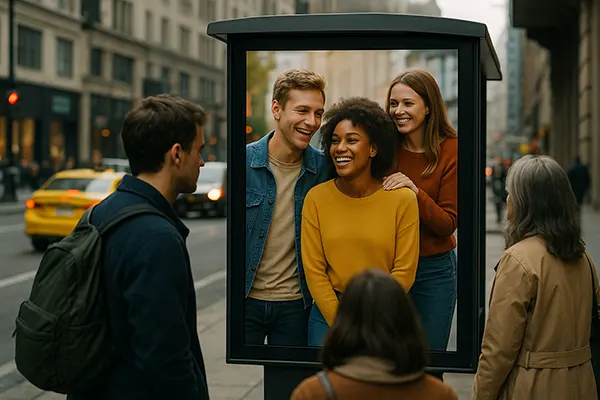
Zero-Click Content in 2025: How to Adapt Your Strategy to Changing User Behaviour
In 2025, the dominance of zero-click content is reshaping the way users interact with search engines and social platforms. Rather than clicking through to websites, users are increasingly finding answers directly in search snippets, featured panels, or within the apps themselves. For brands and content creators, this shift demands a re-evaluation of strategies that previously relied on generating traffic through links. In this article, we’ll examine how to adapt to the zero-click trend without sacrificing visibility or trust.
Understanding Zero-Click Content
Zero-click content refers to information that satisfies the user’s intent directly within the search engine or social media interface, eliminating the need to visit a website. This includes Google’s featured snippets, knowledge panels, instant answers, and content embedded in social platforms like TikTok or Instagram.
The trend reflects a broader change in user expectations — people want fast, concise answers. According to recent data, over 60% of Google searches in 2025 result in no clicks, up from 50% just three years ago. For informational queries, users rarely go beyond what’s presented in the search result itself.
It’s not just search engines adapting. Social media algorithms also favour content that delivers full value within the post. Whether it’s a carousel on Instagram or a short-form video on YouTube Shorts, users increasingly prefer in-app consumption.
Why This Shift Matters
For businesses, this means fewer direct website visits and less traditional traffic. However, it doesn’t mean reduced opportunities. Visibility at the top of search results, inclusion in knowledge graphs, and strong brand recognition through concise social content are the new success metrics.
Users tend to trust and engage with content that feels native to the environment they’re in. Instead of chasing clicks, the focus must be on delivering value immediately. This shift requires a balance between reach and depth, between visibility and context.
It also pushes content creators to think beyond long-form articles or blogs. Every piece of content must now be self-contained, instantly understandable, and optimised for being consumed in seconds — without needing extra action from the user.
Strategies for Adapting Your Content
To stay relevant in a zero-click landscape, businesses must evolve their content formats. Prioritise structured answers, informative snippets, and data points that are easily understood without further reading. Use headers, bullet points, and concise language to increase the chances of being featured by search engines.
Optimise for featured snippets by answering questions directly and clearly. Tools like Google’s People Also Ask section are useful guides for structuring your content. Provide succinct yet authoritative responses — the goal is to be helpful immediately, not just to attract clicks.
Equally important is the use of schema markup. Rich snippets and structured data help search engines better understand your content. In 2025, schema is no longer optional — it’s a critical component of SEO for visibility in zero-click environments.
Building Trust Without the Click
Even if users don’t click through, your brand can still earn trust. Ensure your name, logo, and tone of voice are consistent across all platforms. Repetition builds familiarity, and familiarity builds authority — even without direct engagement.
Additionally, cite reliable sources and avoid exaggerated claims. The E-E-A-T principles (Experience, Expertise, Authoritativeness, Trustworthiness) remain crucial. Content that ranks well in zero-click placements is often created by individuals or entities recognised for their credibility.
Invest in multimedia — short videos, graphics, audio snippets — as these formats are increasingly featured directly in search and social feeds. The more value you can provide in multiple formats, the more likely your content is to surface without relying on a link click.

Measuring Success Beyond Clicks
As traditional traffic metrics decline in relevance, alternative indicators of success become more meaningful. Brand visibility, engagement rates, featured snippet placements, and social shares are now central to performance analysis.
Tools like Google Search Console still provide insight into impressions and queries, even if clicks are low. Track keyword rankings and snippet appearances to evaluate how your content is contributing to awareness, even without site visits.
Social analytics tools offer detailed metrics on content performance within each platform. Monitor watch time, saves, comments, and replays. These behaviours indicate impact, even when they don’t translate into traffic.
Creating Content for Discovery, Not Just Traffic
The objective of content in 2025 is discovery — being found, trusted, and remembered — even if the user never visits your website. Prioritise quality over length, and clarity over complexity.
Align content with user behaviour. Anticipate the context in which it will appear — a quick mobile search, a voice query, or a scroll on social media. Tailor structure, length, and tone accordingly.
Finally, accept that value is no longer measured in clicks alone. The strength of your message, the clarity of your answers, and the trustworthiness of your presence all contribute to long-term brand growth in a zero-click era.
Similar news
-
 Brand Strategy in Times of Change: Building Lon...
Brand Strategy in Times of Change: Building Lon...Organisations entering 2025 face markets shaped by rapid technological shifts, …
-
 Grey Marketing 2.0: How Grey and Black-Hat SEO ...
Grey Marketing 2.0: How Grey and Black-Hat SEO ...As artificial intelligence and machine learning dominate digital marketing, traditional …
-
 Emotional Manipulation in Advertising: How Cris...
Emotional Manipulation in Advertising: How Cris...In times of global instability, emotions become powerful tools for …
